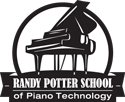Just like you are about to do, I began my career with a correspondence/home study course. In fact, over three-quarters of all tuners begin this way.
I started working with another tuner, and he said “take a correspondence course to learn the nuts and bolts, and I will teach you the rest.” I did; but he was not able to teach me “the rest”. He had also taken a correspondence course (which was not even as thorough as the one I selected) and had learned very little from it. Like most students, he could not afford to pay a technician $30 or $40 an hour to teach him (which would be $50-75 an hour, today), and he never learned much past his basic course. And also like most students, he was not successful in getting an apprenticeship with a competent technician. He had never seen, or heard, anyone tune a piano except himself. Most of the repairs he did were done wrong or poorly. He did not have proper tools or equipment, and knew neither what he needed, nor where to get it. His tuning skills were at the most elementary level, which was not really uncommon with students who studied at home without additional training in those days. I am sure he did well with what he had available, but he just did not get enough training from his course. When I began he told me he had 12 years of experience – I soon learned that what he had was one year of experience 12 times in a row.
From the very beginning I felt a need for comprehensive, state-of-the-art training. I had taken two correspondence courses while in college, because my college did not offer some courses I wanted. I expected the piano tuning course I took to be complete, comprehensive and easy to read and understand, like the college courses I had taken. I was very disappointed to find that the course I took, which was supposed to teach me a new career, did not even have as much material as a three-hour college correspondence course. As time went on, after I got more training myself, I began to teach and apprentice students myself, and continued to search for a comprehensive, competent course. But I was never able to find one.
After several years of training apprentices, and with the encouragement of other piano technicians from around the country, I decided to write one. This is it.
Being a working technician, I still see pianos every day – just like you will soon begin to do. Old uprights and grands, new spinets, consoles, studios, small grands as well as concert grands; some better than others. New technology has brought not only new and better pianos, but new and better ways to service them. The factory techniques of 20 years ago are the shop techniques of today, and a course that is not modern and up-to-date will not give you this information.
I have not relied solely on myself to develop and write this course. Many parts were honed to a fine edge through specialized seminars I have taken the past 20 years at numerous Piano Technicians Guild Conventions in the U.S. and Canada, at Pianoforte Tuners’ Association Conventions in Great Britain, at EuroPiano Conventions elsewhere in Europe, at Austral-Asian Pianoforte Tuners’ Association conventions in New Zealand and Australia, and at various piano factories in the U.S., England, Denmark, Germany, Austria, The Czech Republic and Japan. For the completeness of the chapters on regulating I must give credit to the training I received at the Baldwin, Kimball, Steinway and Yamaha factory training programs, courtesy of those fine companies. The result is the most complete and comprehensive regulating training available anywhere in the world, in any language. In fact, our course is so complete that we have become the largest school in the world teaching piano technicians, and have students and graduates in over 70 countries.
Learning piano tuning at home is not new, but never before has the student been able to actually see and hear actual tuning, or to see the repair and regulating processes performed, while studying at home. With our video tapes, the student can both read about the tuning, repairing and regulation process, then see it being done right before their very eyes, then practice the same processes using the tools, parts and repair supplies they received with the course.
